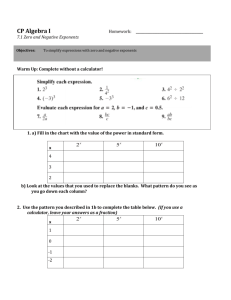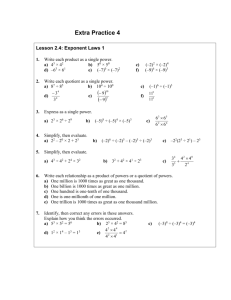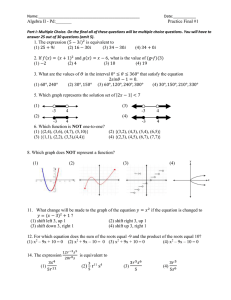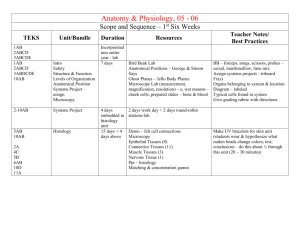Exponential Notation and Order of Operations
advertisement
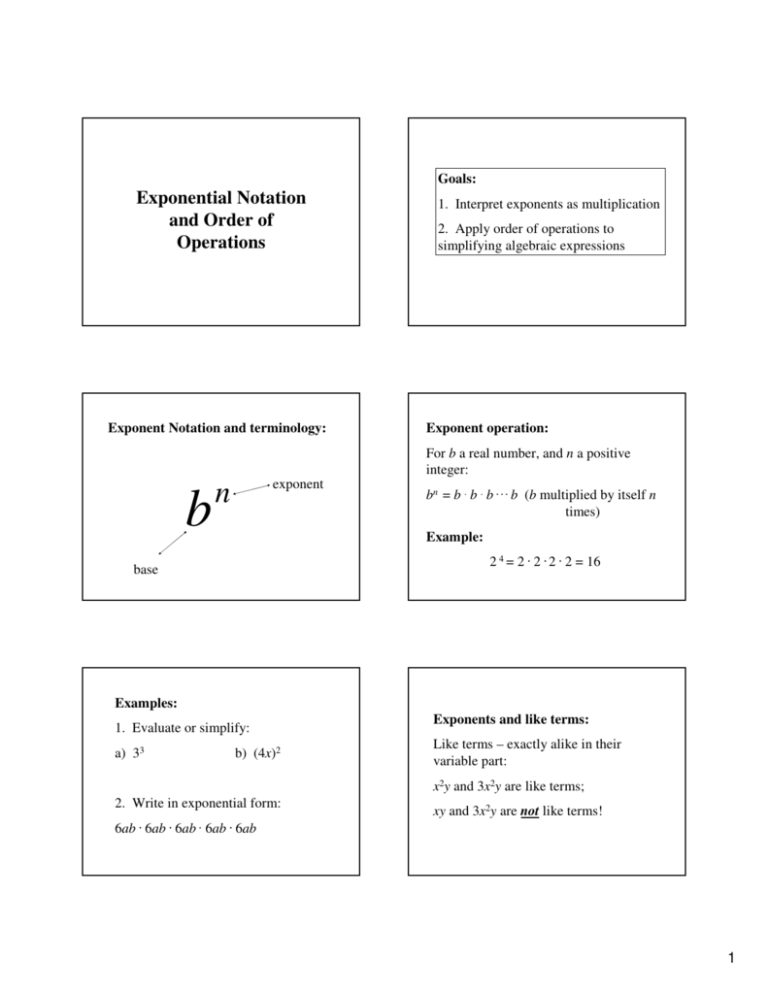
Goals: Exponential Notation and Order of Operations Exponent Notation and terminology: 1. Interpret exponents as multiplication 2. Apply order of operations to simplifying algebraic expressions Exponent operation: For b a real number, and n a positive integer: b exponent n bn = b . b . b . . . b (b multiplied by itself n times) Example: 2 4 = 2 . 2 . 2 . 2 = 16 base Examples: 1. Evaluate or simplify: a) 33 b) (4x)2 Exponents and like terms: Like terms – exactly alike in their variable part: x2y and 3x2y are like terms; 2. Write in exponential form: xy and 3x2y are not like terms! 6ab . 6ab . 6ab . 6ab . 6ab 1 Order of Operations: PEMDAS p Parenthesis E Exponents M Multiplication D Division A Addition S Subtraction Otherwise, follow the order that the operations appear in the expression equal in priority Examples: Evaluate or simplify: 1. 10 – 2 × 8 + 3 2. (5 + 7)2 3. 52 + 72 4. – x2 equal in priority Examples (cont’d): 6. 45 ÷ 5 × 2 7. 9 ÷ 3 – 7 × 2 + (3 + 1)2 5. (– x)2 Property of -1: For any real number a, –1 . a = – a 8. [4 + (1 – 2) ] . 6 9. 5(8 –6)3 ÷ 2 Opposite of a Sum: 10. 2(x + 5) – x For real numbers a and b, 11. 2x(7 – x) + 7x 2 – 2x –(a + b) = – a + (– b) = – a – b Examples: Simplify: 1. – (5a + 3b + 8) 2. – (5a + 3b – 8) 3. 7t – (6 + 2t) 4. r3 + 3r – (6r3 – r) 5. 3x – [7(x2 + x) – 1] 2

